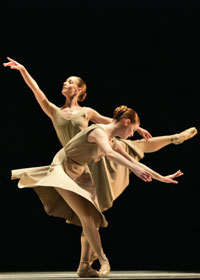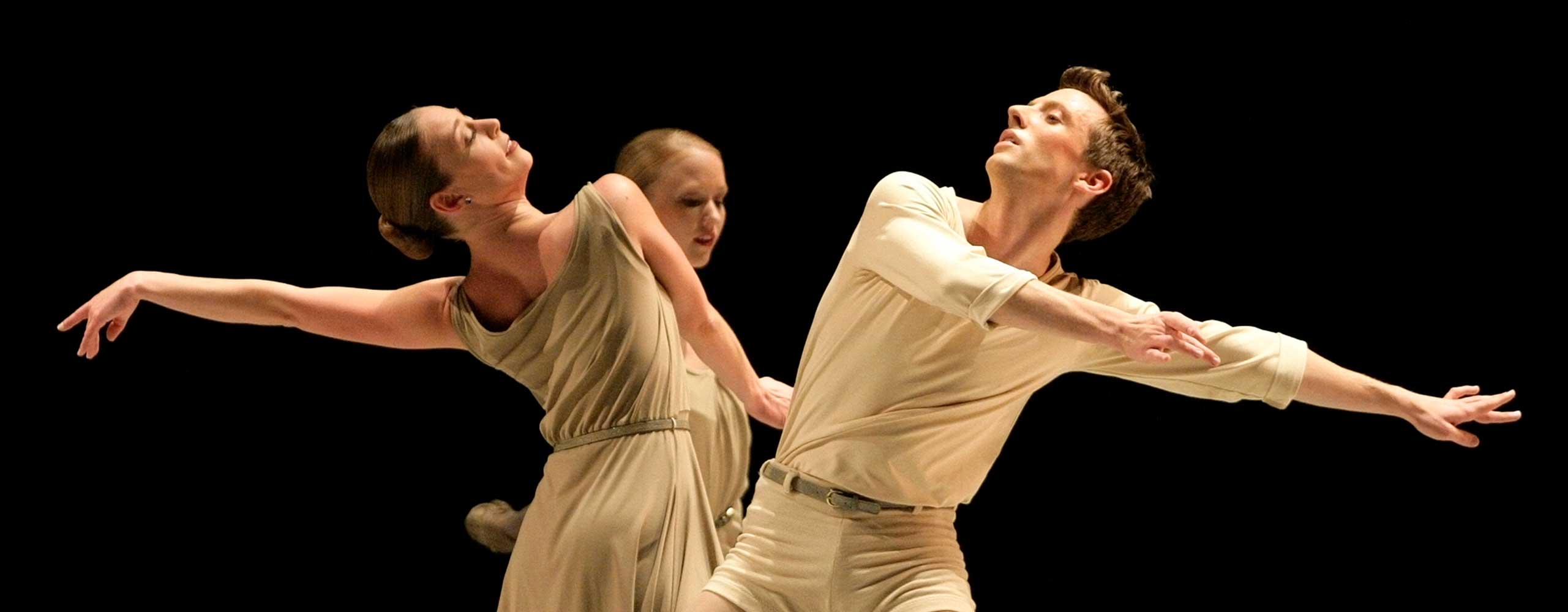
Choreographer: Twyla Tharp
Composer: Franz Josef Haydn
Costumes: Chester Weinberg
Original Lighting Design: Jennifer Tipton
Coming on the heels of Deuce Coupe, this commission became the first ballet Tharp created solely on dancers outside her company. The title for Haydn’s accompanying Symphony No. 45 (of which Tharp uses the last two movements) is “Farewell.” Its premise is for its orchestra to dwindle during the course of the symphony, going from full complement of musicians down to two violinists. Tharp has pointed to the fact that when creating this ballet, she was working with quite young dancers, maybe fresh out of their ballet-school years, thus for all its sophisticated structuring, her choreography might be seen as making for a beginners’ ballet. The chorography proceeds from a strong, clear and direct woman’s solo, in silence, through to a sextet when the female soloist is joined by five fellow dancers (2 women and 3 men). Her “Ten Make Six” sextet, also in silence, is a tightly wrought composition, which includes timings that have been compared to the inner workings of a clock. This segment’s decelerated moves demand keen dancer sensitivity for heeding “inner clock” of the individual. “The Four Finales” heats things up further, as seventeen dancers variously and furiously create a “cast of thousands” effect. Finally, “Then,” an extended adagio, follows Haydn on his course of diminishing density. Eventually, the stage is held by a creamy male solo, smoothly wound and unwound, telling of singular intensity and private introspection.
World Premiere: October 10, 1973, Joffrey Ballet, New York
Kansas City Ballet Premiere: February 25, 2005, Lyric Theatre, Kansas City, Missouri
